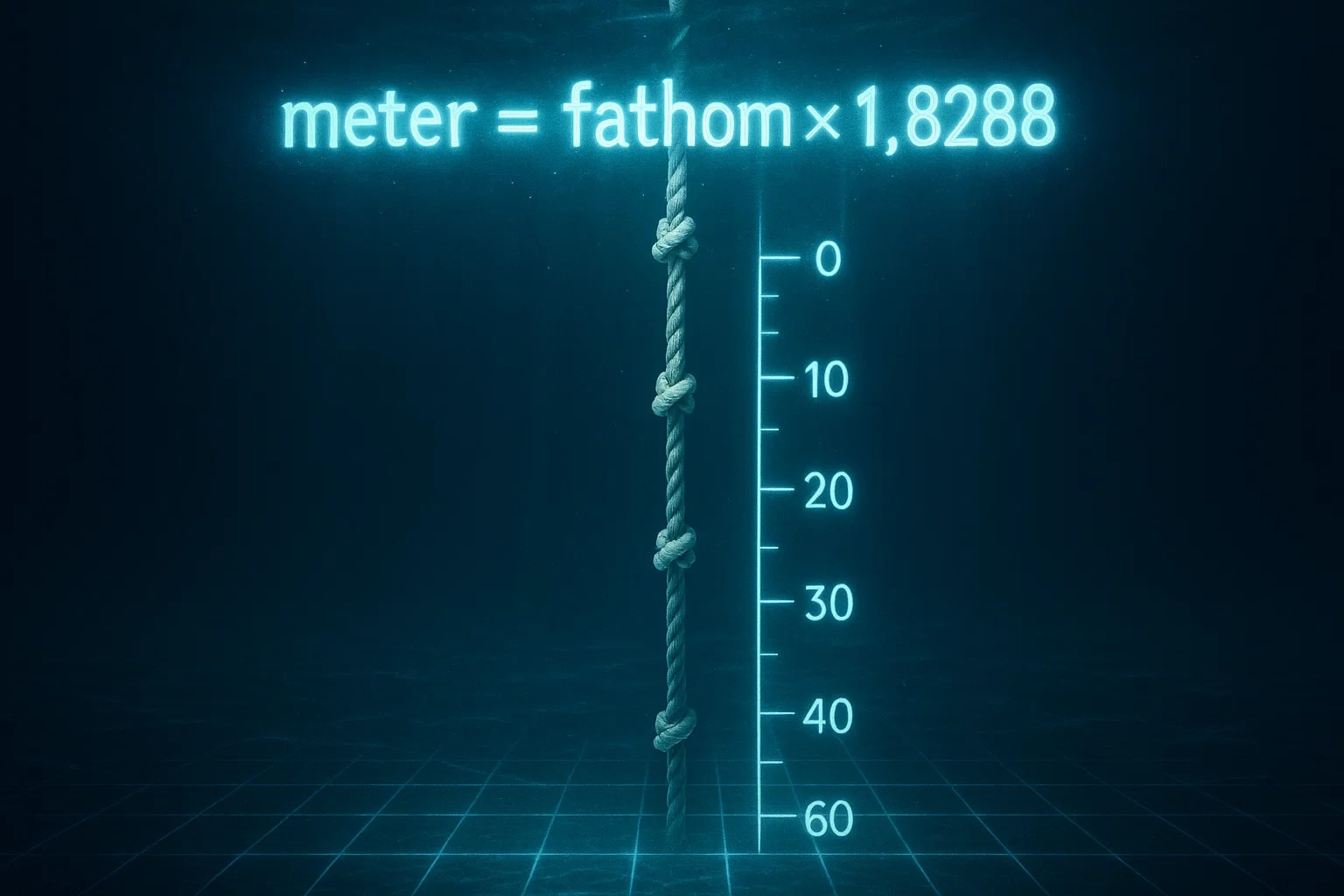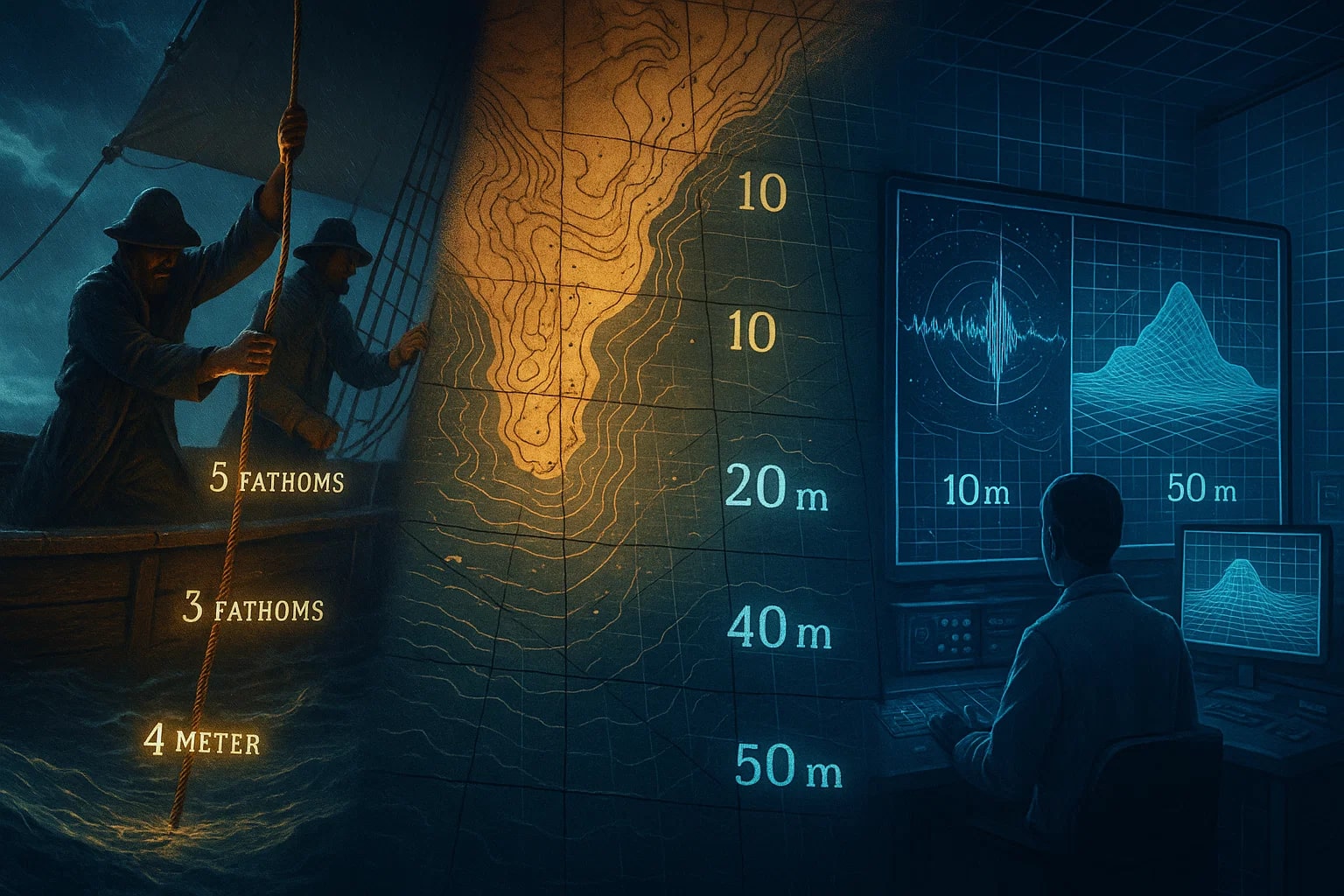fathom to meter – How to convert ftm to m
Converting from fathom to meter brings together maritime tradition and modern science. The fathom, long used in navigation and fishing, expresses water depth in a way sailors could grasp quickly. The meter, on the other hand, is the SI standard used today in oceanography, mapping, and diving. Knowing how to convert ftm to m is still useful when dealing with nautical charts or historical records.

What is a Fathom (ftm)?
A fathom is an old unit of length equal to 6 feet. That is:
1 fathom = 1.8288 m.
It was historically based on the distance between a person’s outstretched arms, making it intuitive for sailors estimating rope lengths or water depth.
What is a Meter (m)?
The meter is the SI base unit of length, used globally in science, engineering, and trade. It is defined by the speed of light in a vacuum and provides consistent, precise measurements for modern navigation and research.
How to Convert ftm to m
The formula is:
meter = fathom × 1.8288
For example, let’s convert 12 ftm into meters:
meter = 12 × 1.8288 = 21.9456 m
So, 12 ftm ≈ 21.95 m.
For exploring further conversions, check the Length Converter or see the complete Conversion Tools.
Do you know?
-
The fathom was widely used in seafaring nations, especially the UK and the US, until metric units became dominant in the 20th century.
-
The word “fathom” comes from the Old English fæðm, meaning “outstretched arms.”
-
Nautical charts once listed depths in fathoms. A depth of “5 fathoms” meant about 9.14 m.
-
Divers still sometimes use fathoms informally to describe depth, though official measurements are in meters.
From Sailors’ Ropes to Oceanography Labs
For centuries, sailors measured water depth using a rope with knots at fathom intervals, known as a “lead line.” This simple system guided safe navigation, ensuring ships avoided shallow reefs and harbors.
With the rise of modern oceanography, fathoms gradually gave way to meters, which align with international standards. However, many historical documents, maps, and even maritime culture still mention fathoms. Converting these values to meters helps scientists, divers, and historians make accurate comparisons today.

Depth in Two Languages
The conversion from fathom to meter reflects the transition from traditional navigation to global science. Fathoms preserve the heritage of seafaring, while meters provide the precision required for modern research and international communication.
By applying this quick formula, you can read nautical charts, interpret maritime history, and connect it all seamlessly with today’s metric world.

